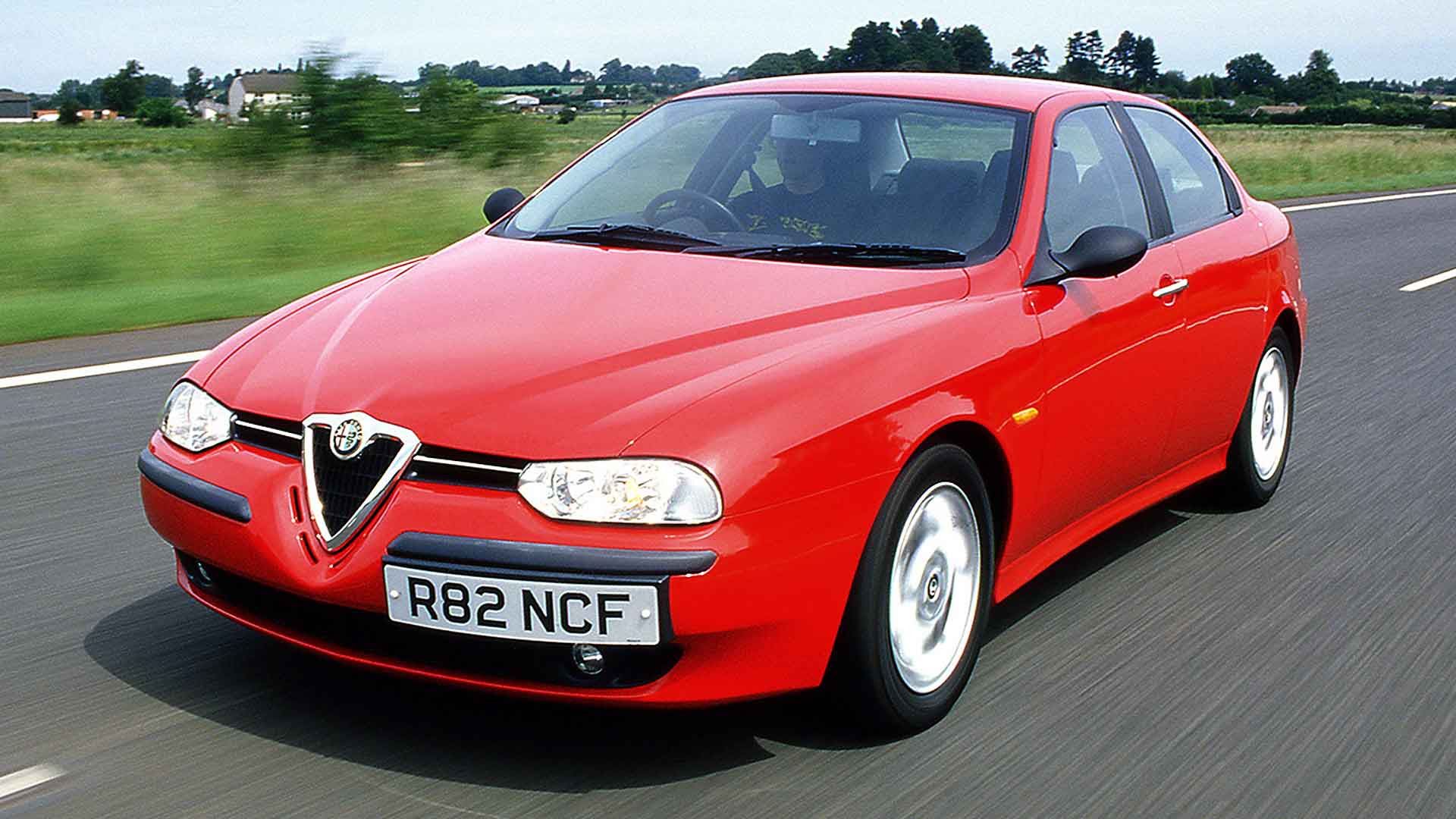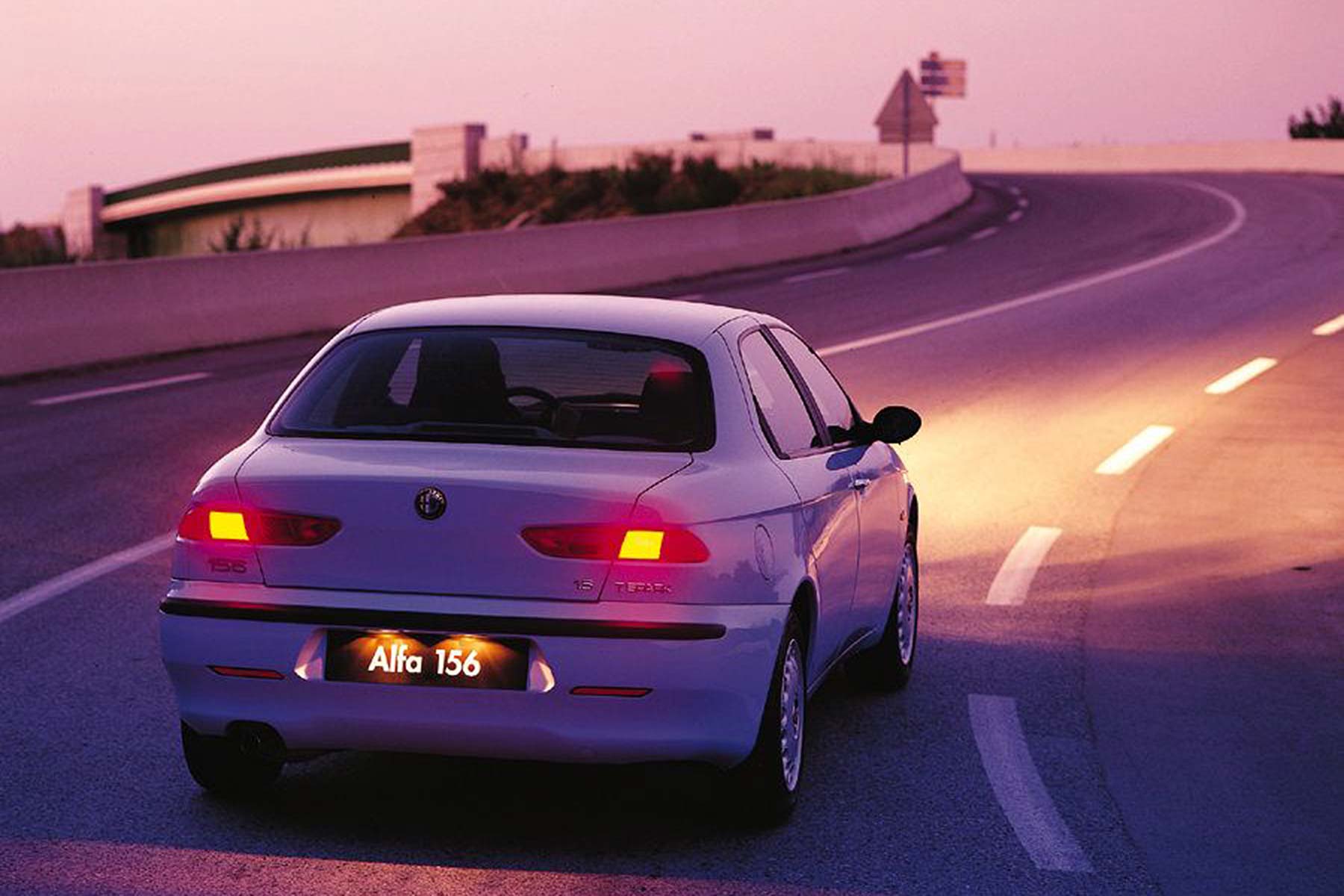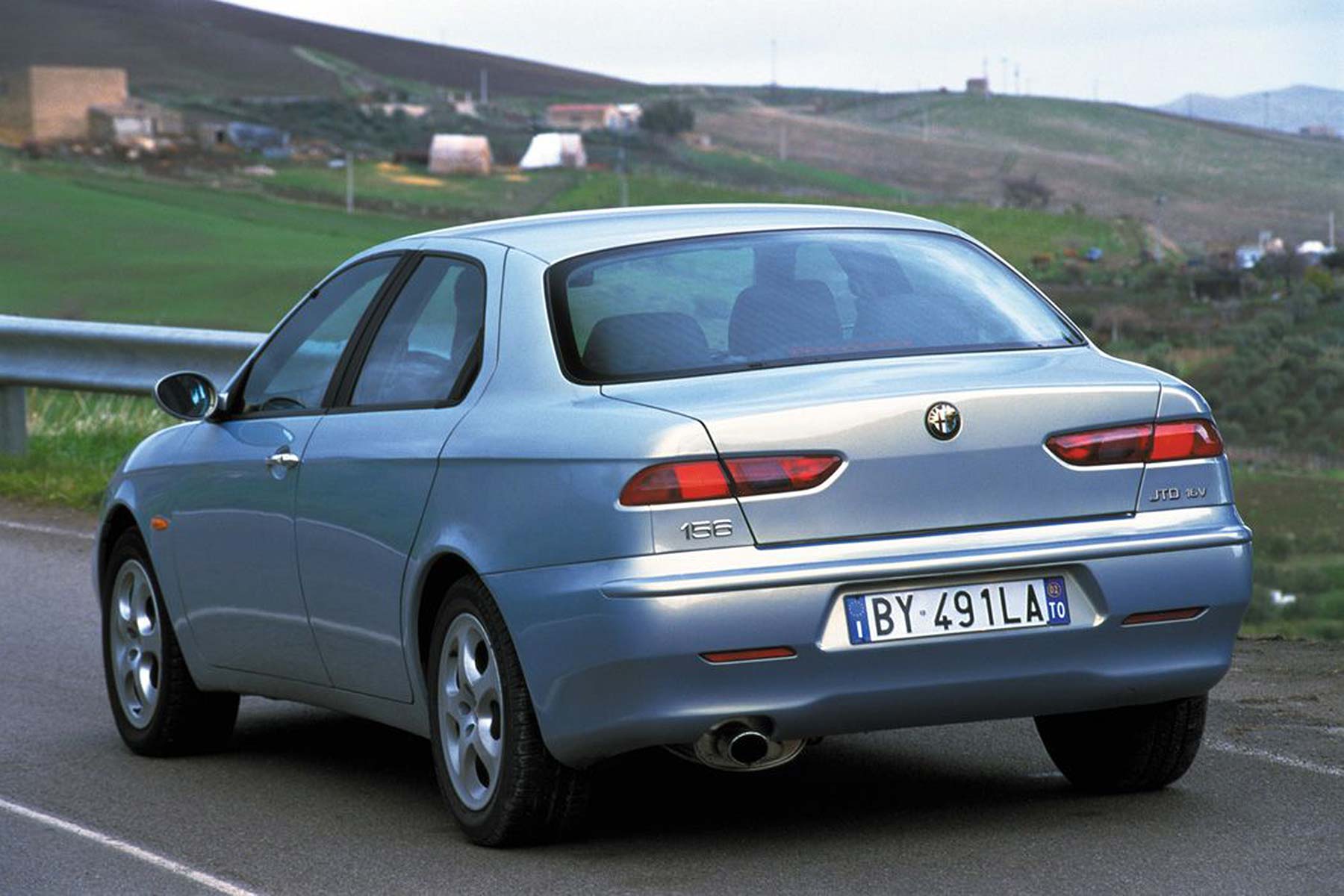Cast your mind back to the 1990s. Just when we thought every new saloon was as tedious as a rush-hour queue, along came the Alfa Romeo 156 and made us all think again.
In industry-speak, a saloon is a three-box car – the bonnet is one box, the passenger compartment another and the boot the third – and there have been legions of dull examples over the decades. Many of them came from Britain, many more from Japan, and a sizeable heap from the USA.
By the mid 1990s, Europe’s preference for the hatchback had long been dominant. The few remaining saloons came from premium manufacturers, their higher quality, often sporting intent and side order of brand sheen making, for instance, a BMW 316i far more appealing than a Ford Sierra Sapphire or Toyota Carina E.
But when the Alfa 156 appeared in 1997, it was impossible not to breathlessly conclude that the three-box saloon had become massively desirable all over again, simply because it was so shapely.

There was the obvious appeal of the famous Alfa Romeo three-piece grille, which had displaced the number plate to one side in an intriguing arrangement not seen in decades. There were the almost voluptuous surfaces of its flanks, the creases floating above its wheels fading to nothing as they blended into the smooth, ground-bound curve of the doors. The Alfa’s tail was quite abruptly cut, its lights a pair of soft-cornered, horizontal parallelograms to create a back end almost as appealing as the front.
Those tail lights were just one example of the 156’s fine detailing, which also included recessed rear door handles. The idea was to create the impression of a two-door car, a trick much copied since.
As for the front handles, they were a retro-look pair of elegant polished aluminium grips that were hard to miss. The 156 sat well on its wheels, too, whether they were plastic-covered steels or Alfa’s lovely telephone dial alloys.
A clean and clever cabin

The good news continued inside. The 156’s fulsomely curvaceous dashboard was dominated by the torpedo-like twin binnacles of speedo and rev counter, its centre console topped with a trio of driver-angled minor gauges, a look referencing the dashboards of the GTV and Spider of the 1960s.
The cabin looked well finished and free of quirks, unlike its distant Alfa 75 predecessor with its finger-pinching U-shaped handbrake and electric window switches bizarrely mounted in the roof. Above all, though, the 156 looked tastefully stylish, just like a good Alfa should.
The car it replaced was the Alfa Romeo 155: a sorry Fiat Tipo-derived front-wheel-drive device that was a lot less fun to drive than the preceding rear-driven 75. The 155 improved vastly when the so-called wide-bodied version emerged, this race-inspired model sitting on a broader track with blistered wings.
It did drive a lot better as a result, but by then there were more capable cars around, Alfa’s often spectacular, two-wheeling successes in the British Touring Car Championship did almost nothing to boost sales.
The 156 shared some of the 155’s mechanical innards, including its rorty Twin Spark four-cylinder engines, while the centre section of its floor came from the near-forgotten Fiat Marea saloon, but most of it was new – including the suspension.
This consisted of exotic double wishbones up-front and McPherson struts at the rear, anchored by a trio of rods per side to provide solid location and touch of rear-wheel steering. Fairly sophisticated for the day, then, although the running gear’s most striking feature was steering that needed only 2.2 turns from lock-to-lock, promising a responsive car on the road.
Besides a trio of 1.6-, 1.8- and 2.0-litre Twin Spark engines, there was also a 2.5-litre version of Alfa’s tuneful V6, plus a mightily impressive diesel. The latter was fuelled using a new injector system known as common rail, the cylinders fed via this solenoid-controlled distribution tube, rather than via individual pumps.
The result was more accurate fuelling, which improved economy and considerably reduced a diesel’s rude clatter.
Like it’s on rails

Common rail was already being employed in a more mechanical form in commercial vehicles, and had been used in submarines as early as 1916, but the Alfa was the first car to feature it, and with a clever electronic control unit that heightened its effectiveness. The technology is now commonplace.
The debut of significant new diesel tech in an Alfa might seem a bit like Mo Farah promoting pills for arthritis, but the system had been under development with Alfa’s parent company, Fiat, and introducing it in a premium model to rival BMW and Audi was right on the money.
Right on the money was what Fiat could have been, had it not passed over development of the clever part of the system, the engine’s brain, to supplier Bosch for completion. Alfa got first dibs on the system in the 156, but Mercedes-Benz followed later the same year with the C220 CDI.
It wasn’t long before Bosch has sold the system to a torrent of manufacturers to make fat profits that Fiat badly needed. It was the first strategic error around one of Alfa’s best-planned models in years, although the loss of this revenue wouldn’t be apparent for some time.
Meanwhile, the 156 enjoyed a reception bordering on the rapturous. Alfa Romeo had badly needed to pull something magical out of the bag and, amazingly, it had. Not only did this car look great, but it drove well and appeared to have none of the obvious drawbacks that Alfas so often had.
The 156 won the 1998 European Car of the Year award and over 30 more awards besides. Customers couldn’t wait to get their hands on one.
A successful start

Less than two years later, Alfa had already sold 365,000 examples of the 156, enjoying success the marque hadn’t experienced since the 1960s. More versions came, of course, including an elegant (if barely more useful) Sportwagon estate, the rapid but troubled 3.2 V6 GTA and, before these, a pair of automatics.
One was a conventional torque-converter transmission for the V6, the other a robotised manual called Selespeed. Its gears you could select manually via wheel-mounted buttons, or automatically by pressing the ‘City’ switch. Either way, it shifted gears like a man with a peg-leg, and developed problems with a regularity that would have made the Philae lander spacecraft seem a technological impossibility for mankind.
Other problems emerged, too. Misaligned suspension chewed through tyres. The rear suspension’s bushes were eventually crushed to clunking uselessness. Alfa’s once fine reputation for producing tough, long-lasting engines was being trashed by a deluge of troubles more complicated than the 156’s trim options.
Diesel engines flung off their timing belts, causing pistons to hit valves, the Twin Sparks quite often did the same, the variable valve timing system was prone to failure and the 2.0 suffered from oil starvation. The Selespeed was best avoided if you didn’t want to double your trouble and the diesel versions sometimes had brake issues.
Far from every 156 was unreliable, but there were enough to have the eager buyers who had switched to Alfa Romeos from German cars despairing at what they had done. Their doubts were only reinforced – massively – by the often ludicrous delays for spares and patchy dealer service. All of which hit the 156’s residual values as hard as filling its boot with dung.
Decline and fall

Huge damage was done to Alfa’s reputation and perversely, the more 156s it sold, the more at-risk it became. Sales began to slow, and while a neat Giorgetto Giugiaro facelift, along with a new 2.0 JTS petrol engine, prolonged the decline, it was obvious that the explosion of enthusiasm shown for the car originally was depressingly misplaced. Proof of this came with launch of the 159 that replaced it.
While not as refreshingly original as the 156, the 159 was a pleasing update of the kind that any of Alfa’s evolution-oriented Teutonic rivals would have pursued. It was better finished, had more advanced engines, vastly improved safety performance and significantly greater body rigidity.
But because it was born out of a troubled development programme with General Motors, it was also too big and too heavy. Those drawbacks certainly slowed sales, but it was Alfa’s poor reliability and the often shabby way it treated its customers that mainly did for the 159.
It lived only six years to the 156’s eight, and scored 240,000 sales to its predecessor’s 650,000. The 156’s sales record is one of Alfa’s best, although its 1960s ancestor, the Giulia saloon, got close with almost 580,000 sales in a much smaller market –and the smaller Alfasud topped it with over a million sales.
The 156 could have permanently revived Alfa, had it been properly engineered and backed with decent service. Now the company’s hopes for sales success rest with the Tonale SUV, hopefully without the bitter aftertaste this time.
ALSO READ:
Great Motoring Disasters: Fiat Croma



Have it serviced regularly, replace what needs replacing, and a 156 doesn’t underperform in the maintenance dept. To Alfistis, the 159 cannot hold a candle to the lighter, more agile and better motorized (Alfa’s own twinspark engine instead of GM powerplants) predecessor. The 156 will be Alfa’s future classic, more than its GT and GTV siblings IMO, especially the SW version.
Hear hear, Phil!